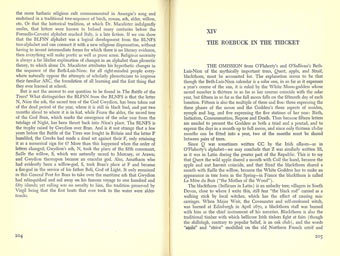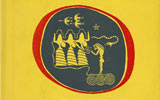Graves regarded Laura Riding as his Muse....the living, breathing representation of the Goddess, who was inspirer; object, subject and recipient of his poetry.
The most complete expression of Graves’s notion of the matriarchal ‘Triple Muse’ is in his The White Goddess, which he subtitled: a ‘historical grammar of poetic myth’. Imaginative, heuristic, and complex, Graves himself admitted his very personal approach
‘I have no knowledge even of modern Welsh; and I am not a mediaeval historian. But my profession is poetry, and I agree with the Welsh minstrels that the poet’s first enrichment is a knowledge and understanding of myths.’
Graves acknowledged T. S. Eliot’s brave acceptance of the book for publication and hoped that some good would happen to him. It did: Eliot got his money back, he was awarded an Order of Merit, he was awarded the Nobel prize for literature, and he had a smash hit on Broadway.



